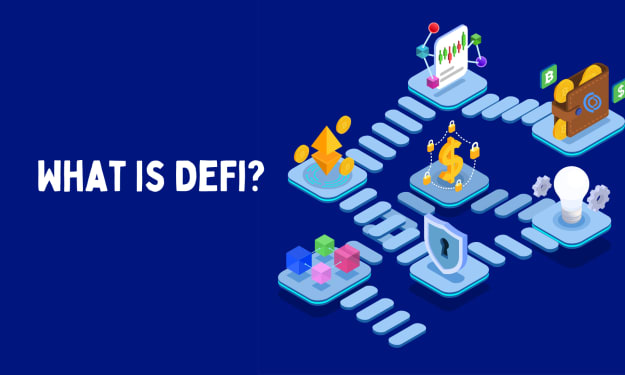Building an Online Platform for Cryptocurrency Exchange From Scratch
Cryptocurrency exchanges are online platforms where people can purchase, sell or trade their cryptocurrencies.

Building such a platform is now in the attention of many people, because of their potential profitability, and efficiency, in terms of managing them in the long run. A cryptocurrency online marketplace is not that difficult to build either. You only need a well-thought-out plan, some resources, and the required knowledge.
Crypto exchanges are the only way to buy and sell cryptocurrencies, and there are plenty of such marketplaces online. This is the reason why you should pay attention to your competition, and what challenges you may encounter during the process. If it seems too rough for you, step aside and plan some more. This article contains valuable information about this topic, so read it thoroughly, and take notes if needed.
You should keep in mind a few considerations before starting your online cryptocurrency platform:
Centralized vs Decentralized
Decide what type of exchange platform you want to own: centralized or decentralized. Centralized platforms have full control over a user’s funds, and some operations take place without involving the blockchain network. The crypto exchange will still have high liquidity, and they are extremely easy to use, but they don’t offer the privacy that a decentralized exchange would. In the case of decentralized crypto exchanges, everything happens anonymously via smart contracts. Everything happens on the blockchain network, and there’s a lower chance of cyber attacks. Decentralized exchanges may have less liquidity though.
Crypto Pool
Think about what types of cryptocurrency you would like to include on your site. Do thorough market research, and see what cryptocurrency you should support on your platform, and what the arguments that sustain your standpoint are. The most common approach is supporting tokens that are Ethereum-based. Other platforms are dedicated to one type of token only. Look carefully for aspects such as market advantages, and popularity growth in cryptocurrency.
Finding Partners for Payment Processing
Another issue that appears when starting your own cryptocurrency platform is converting real money (fiat) to tokens. You will have to find a partner that is willing to handle the payment processing. When choosing your partner, pay attention to operational details such as the available transaction times or the processing fee. Analyze the conversion options judiciously, and see which option is the most suitable for your platform.
What do you need for launching a cryptocurrency exchange online platform?
A cryptocurrency exchange platform requires four elements: a trading engine, a front-end interface, a cryptocurrency wallet, and an admin console. The trading engine is the substance of the crypto exchange platform. This gives your platform shape, by enabling the site to execute transactions, calculate balances, matching transactions, and more. If you’re not a good programmer yourself, you might face some challenges when building the trading engine. Integration testing is probably a priority of building this engine. If you lack the knowledge to put the trading engine together, you should consider programming outsourcing.
White label solutions should be your go-to when you have no idea what direction to follow when building such a platform for the first time in your life. Outsourcing parts of the crypto exchange platform can help it become popular more rapidly. Moreover, it will be as responsive and safe as users expect, without encountering unpleasant errors that stain their trust. White label solutions are also suitable for people who don’t have enough resources, to begin with. If the trading engine is your only obstacle, don’t waste time, and leave the job in the hands of people who already have a lot of experience in this field.
Next, you need to build your platform’s front-end user interface. This interface includes basic elements that make the experience pleasurable, and intuitive for whoever wants to use the services that your site provides. It features the necessary tools for signing up and logging in to the website, for making deposits and withdrawals, for tracking order books, balance, and statistics, etc.
It is paramount to add cryptocurrency wallet support. An aspect that is often overlooked when building crypto exchange platforms is security. If you want to add wallet support, you will have to invest more resources into security. Cybercriminals often target cryptocurrency exchange platforms, because they know that most of them store tokens in such wallets.
Finally, figure out the admin console, which is the back-end of your platform. This will enable the creators of the platform to access important settings, such as how the exchange is carried. The options that this console should contain include modifying the trading fee, managing the listings, adding new cryptocurrency, tracking transactions (for centralized platforms), and more.
How much will it cost?
Even though all these values are potential, you should be able to figure out how much building a cryptocurrency exchange platform would cost. It depends on what developers you select for handling the code behind the platform. The developers required for a high-quality platform are backend, frontend, QA, and a project manager. The US hourly rate for these developers can be anywhere between $35 and $70. For the size of such a project, two QA engineers are usually needed.
The European hourly rate can start at $15, and reach a maximum of $40. To this, you should also add the costs for developing a mobile app for the platform, thus hiring an iOS and Android developer. The total cost of launching a crypto platform can reach up to $400,000 in the US, and $200,000 in a European country. These numbers can change based on how outsourcing is done. As for the time resource, developing a cryptocurrency exchange platform can take anywhere between three months and one year, depending on its complexity, size, and specifics.





Comments
There are no comments for this story
Be the first to respond and start the conversation.